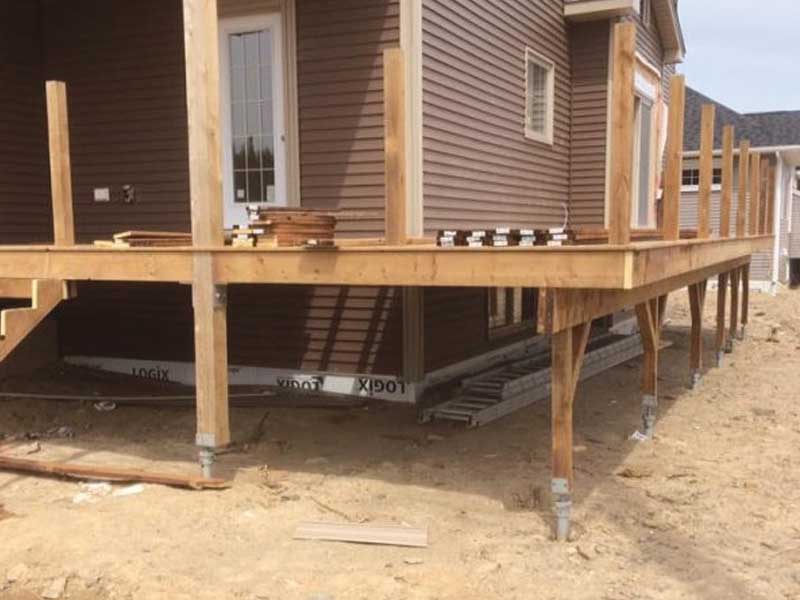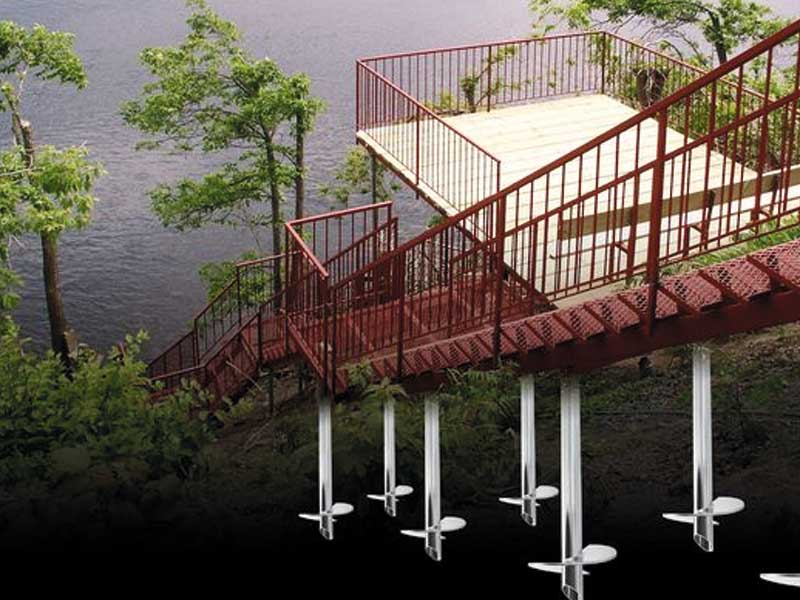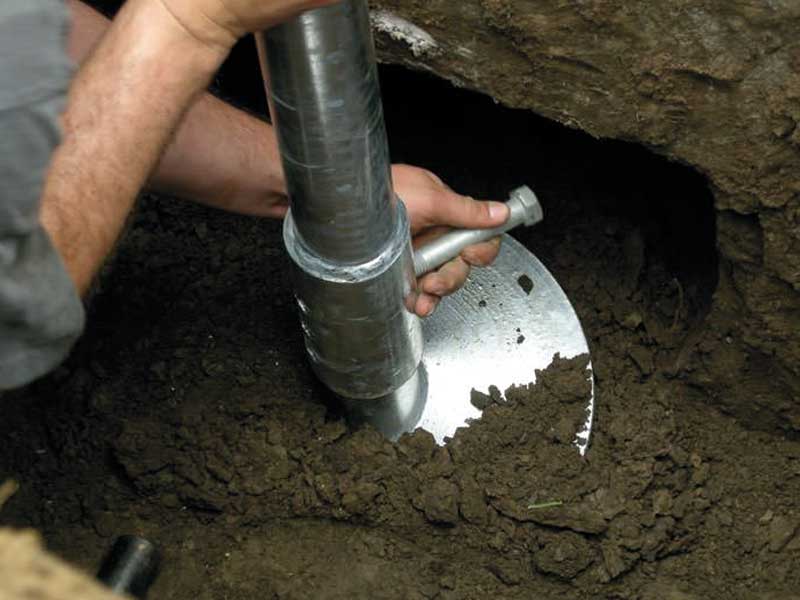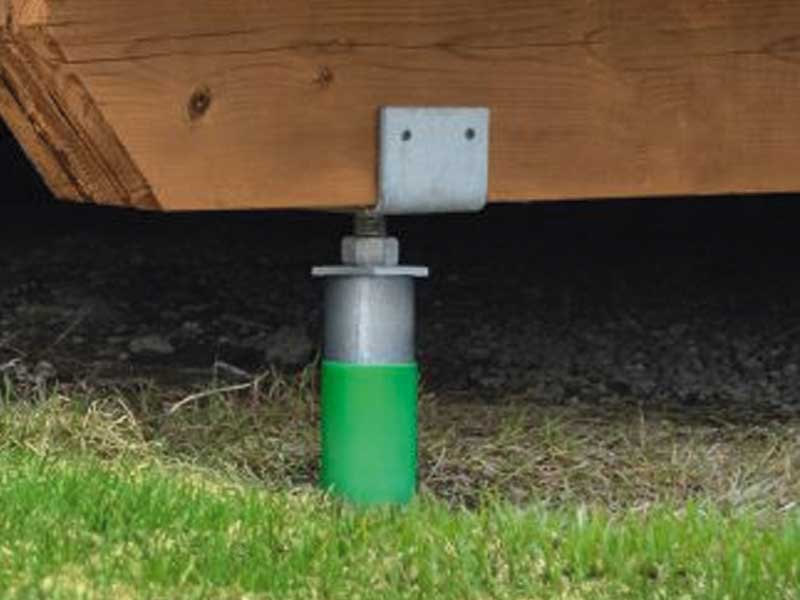Scherber Excavating
20160 75th Ave N, Hamel, MN 55340
+16122827403
Helical Piles
Screw piles are a prefabricated steel foundation system consisting of a central shaft with one or more propeller-shaped support plates, commonly referred to as paddles or carriers, welded to the leading section. Spiral supports are the ideal solution for foundation anchoring when ground conditions are not suitable for the weight of the structure. Spiral legs are hollow steel tubes used to stabilize structures by attaching a load to the surrounding ground, just like a swing. In our industry, helical piles are particularly useful in the construction and repair of foundations for bridges, railroads and docks in wetlands, harbors and soft ground areas.

Most helical screw piles are round hollow shafts or square solid shafts extruded from steel and available in a wide variety of diameters and sizes to suit various types of projects. The posts or piers are round steel shafts with welded plates (propellers) that are mechanically screwed into the ground like wood screws to form the base of the pier. One or more steel threads (or screw bearing plates) welded to the shaft provide sufficient downforce to the ground as it is screwed into the ground. The load is transferred from the central shaft to the ground via screw base plates. Micropile & helical piers are also use for foundation support, home foundations, and the helical anchors are very affordable also the helix comes in 2 different types, with square shaft or cylinder anchors.

The screw anchor/pile is a deep retractable foundation system with helical base plates welded to a steel center shaft and a steel center shaft. The screw foundation consists of at least one helical steel base plate attached to a central steel shaft. Spiral foundations can be fully tensile; so that the screw plates can be installed at any given support depth.
As a result of the true helical shape of the screw base plates, the propellers do not cut into the ground, but are screwed in with minimal interference. Each propeller blade operates independently in a bearing along the pole shaft. Propeller blades are typically spaced three diameters apart along the pack shaft to prevent significant blade loading on the adjacent blade bearing surface.
Props might be pressurized with a certain pitch, or just consist of flat plates bonded at a details pitch to the pole shaft. The screw assistances are screwed right into the ground, to the bearing layers defined (by the project) by revolving the steel shafts with a torque electric motor linked to the drilling/drilling gear of the excavator.

A safety factor of 2 is often used to determine the allowable bearing capacity of the soil, especially if the torque is controlled during the installation of screw piles. Engineers can use the relationship between installation torque and load capacity to establish minimum torque standards for installing industrial screw foundations. The higher the torque during installation, the higher the axial load of the screw foundation to be installed. Since the shaft of the screw foundation is smaller than that of conventional piles, the lifting force is lower.
Strategically designed helical blades along the borehole penetrate the ground without an auger, moving the soil while the torque is carefully controlled as the pile advances. The high frequency drive energy generates minimal vibration, allowing ductile iron poles to work effectively in close proximity to existing buildings, such as spiral poles. If a specialized piling machine achieves the required ground depth (less than four feet) and the correct torque in pounds per square inch (PSI), the spiral pile pits meet building code requirements to support the structure. Once properly installed and positioned, spiral posts/pillars can be attached to an existing foundation or used for new construction.
Columns and screw piles are especially useful when it comes to reinforcing a foundation that needs repair. Whether used for residential or commercial purposes, their long life and proven performance make them a popular choice for construction projects. Poles and screw piles are not only an economical solution, they are relatively quick to install and provide tremendous strength and stability to a variety of structures. Foundations created or repaired with posts and screw piles are an effective way to ensure that foundations are properly reinforced.
Screw stacks can be used to create new foundations, to support damaged foundations, and also to much better maintain existing foundations in preparation for higher loads. Offered the simplicity of setup of piles as well as high load-bearing ability, Ram Jacks screw heaps can be used in a variety of ways to effectively repair foundations, despite just how special the project. Spiral piers, likewise called screw anchors, screw piers, screw piers, screw piers, screw anchors, screw piers, and also screw foundations, are embedded deep into the bowels during the setup process to disperse the massive weight that presses down on the screw pile.

Screw piers, sometimes referred to as screw piers, screw piers, screw anchors, screw foundations, screw piers, screw piers, or screw anchors, are a steel screw pile system and ground anchoring system used to construct deep foundations. Screw supports are usually made of high strength steel [1] using tubular hollow sections of various sizes for the anchor post or shaft. The push posts are nails that are driven into the ground under the weight of the house, and the screw pile is a suggested wood screw that is installed with a hydraulically driven head. To complete, the pile head can be connected to the structure in various ways by direct connection of the steel flange plate or connection of the plate/reinforcement to concrete.
Recognizing the application and use of these metal steel posts, “the Techno Metal Post screw post is screwed into the ground with patented hardware until the required structural load capacity is reached. The spiral design allows our piles to be screwed into the ground, which provides better speed and predictability, as well as a better cost than traditional pile driving methods. The screw plates are spaced far enough apart to function independently as separate load-bearing elements; therefore, the ability of a particular propeller on the truss shaft/propeller support is not affected by the propeller above or below it.
